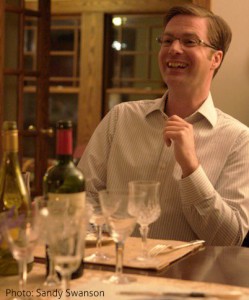
Mr. Drew McManus
With Great Power Comes Great Responsibility
Posted by Oct 03, 2011

Mr. Drew McManus
It's great to see how much technology is integrated into this year's National Arts Marketing Project Conference. Out of the three conference categories (audience actions, technology treasures, and eye on income), technology occupies a full third and among the others, many of the session panelists are from technology-focused businesses.
And of all the tools available to arts marketers, technology solutions provide some of the most powerful advancements in recent years to effect positive change.
At the same time, technology providers have a responsibility to resist overselling products and services; something I fear is beginning to get out of control to a point where some arts organizations are beginning to suffer from the pursuit of improved technology solutions.
It's become so commonplace among web and IT professionals in the field that dissolution is fodder for satire. For example, I received the following text from a colleague the other week who had this to say about the onset of a technology implementation project at her arts organization:
"...always fun to watch as people realize [Technology-X] doesn't cause gumdrops and lollipops to fall from the sky..."
















